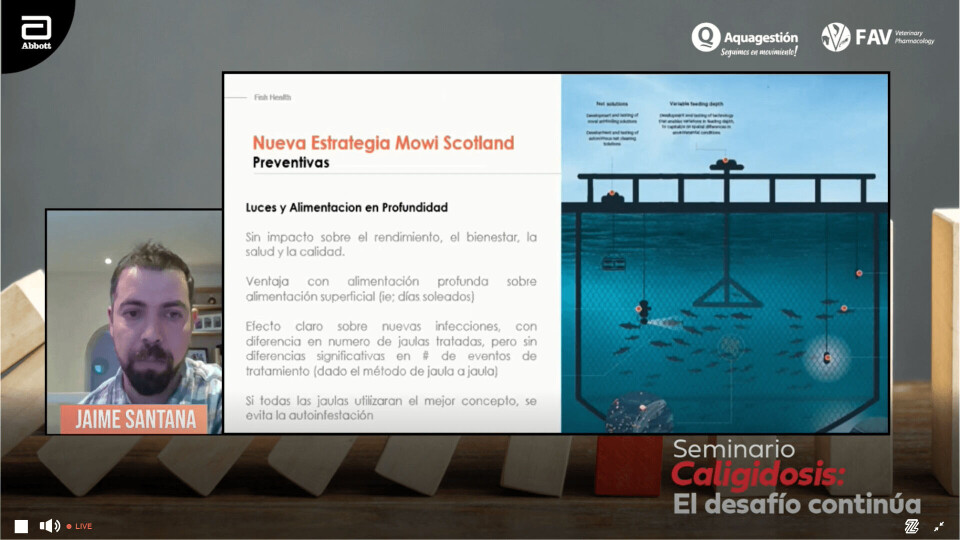
Sea lice prevention efforts ‘are worth the expense’
Mowi Scotland fish health manager Jaime Santana has highlighted the importance of the company’s “first line of defence” against sea lice.
The vet said deep feeding, the deployment of AKVA’s Tubenet snorkel cages at one site (Port na Cro, Argyll and Bute) and the company’s “zero ovigerous females” lice strategy were being used to help reduce the number of lice treatments required during a farming cycle.
Santana, originally from Chile, was speaking at the first day of an online event, Caligdosis, the challenge continues, organised by Chilean companies Aquagestión and FAV.
He explained that Mowi Scotland now intervenes in cages when lice levels reach 0.2 egg-bearing lice.
Non-medicinal options
Mowi uses non-medicinal options such as the Thermolicer and Hydrolicer mechanical delousers as far as possible but can also resort to limited use of medications such as in-feed treatment Slice (Emamectin benzoate) and bath treatments Salmosan (Azamethiphos) and AMX (Deltamethrin).
The Thermolicer had an efficiency of 90-98%, with a fish mortality per session ranging from 0.03% to 0.12%, said Santana, while the Hydrolicer had an effectiveness of 78-95% and a fish mortality of 0.05% to 0.15%.
Santana said although preventive tools against salmon lice are expensive, the return on expenditure is good when taking into account the fact that few drugs are effective against sea lice, mechanical treatments must be measured against animal welfare, and there are restrictions on the number of cleaner fish available.























































